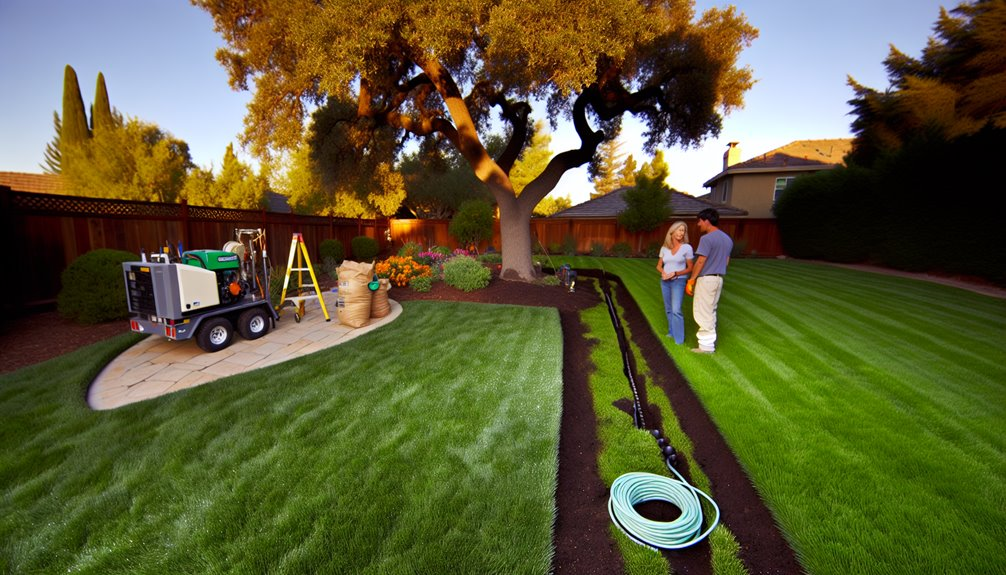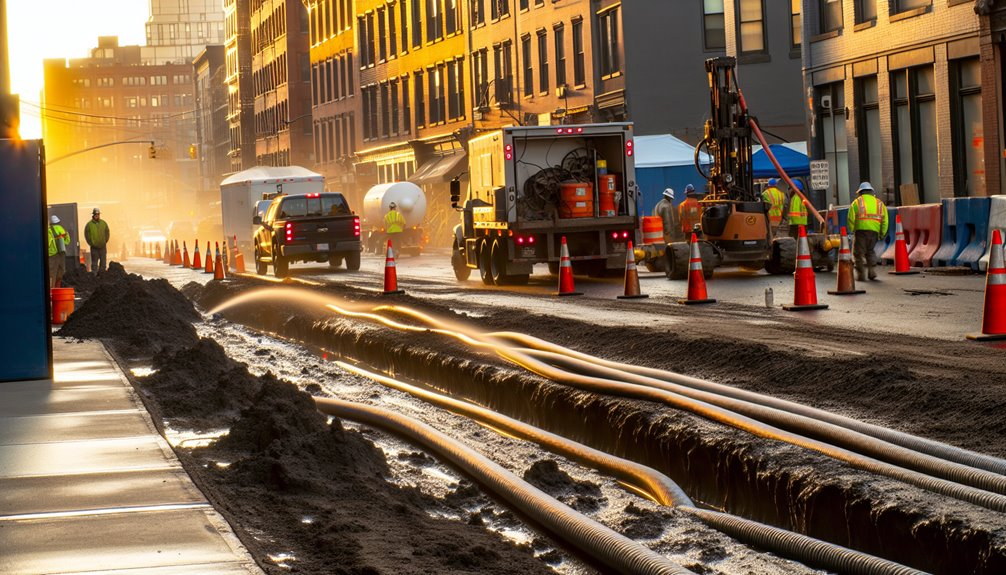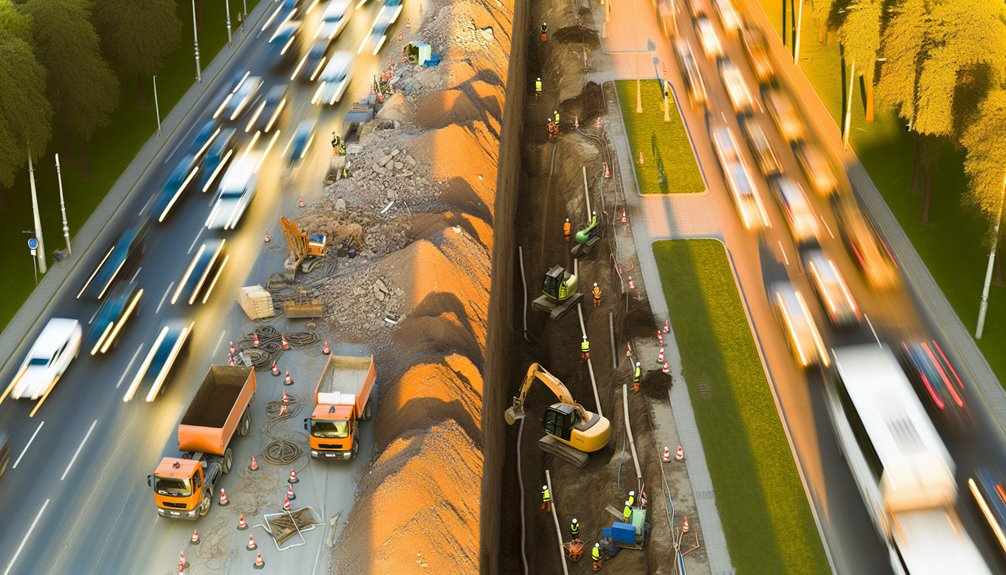You want to upgrade your yard without tearing it up. Directional drilling, or HDD, lets you install pipes, cables, and conduits beneath lawns, trees, patios, and driveways with minimal surface disruption. It reduces root damage, mitigates utility strikes, and shortens project timelines. With proper planning, bore-path mapping, and utility locating, it’s a safer, cleaner alternative to trenching. If you’re weighing cost, risk, and site protection, here’s how HDD can protect your property—and when it’s the smart choice.
What Is Directional Drilling in Landscaping
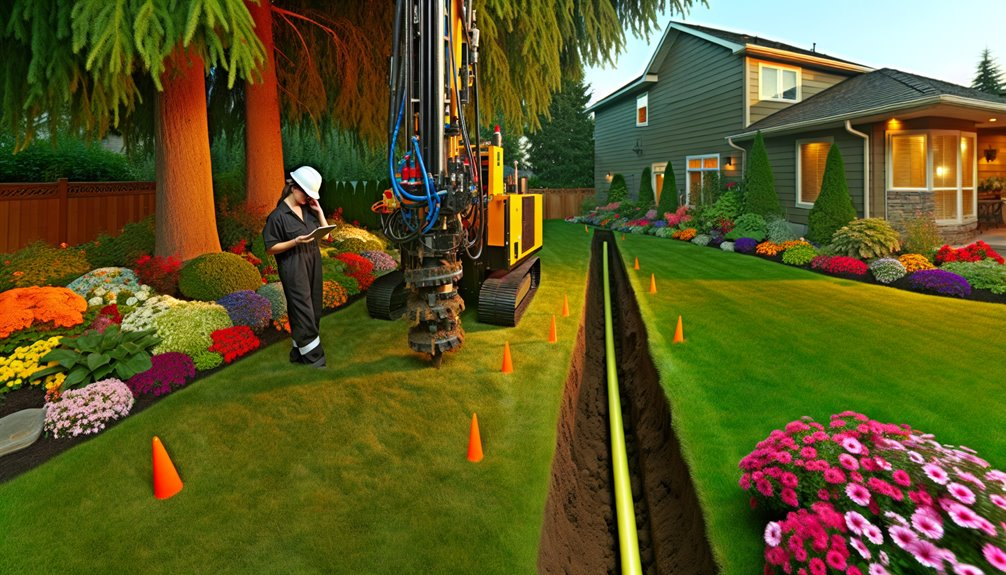
Directional drilling in landscaping is a trenchless method for installing utilities—like irrigation lines, low-voltage conduit, water service, or drainage—by drilling a guided bore beneath the surface and pulling pipe or cable back through the pilot hole. You use a steerable drill head to follow a planned path, then enlarge the bore and install the product line.
With Horizontal boring, you minimize disturbance, shorten project timelines, and reduce restoration costs.
You start with subsurface mapping to verify clearances from existing utilities and geology. A locator tracks depth and azimuth, so you maintain target tolerances and avoid cross-bores.
You’ll specify entry/exit angles, bend radii, and reamer sizes based on soil conditions and pipe specs. Establish a safe work zone, manage drilling fluids, and document as-built data to keep your crew aligned and your site compliant.
Protecting Trees, Gardens, and Hardscapes
Roots, beds, and pavers demand a protection plan before you drill. Begin with a utility locate and a tree inventory. Map drip lines, then set no-entry buffers. For root protection, specify bore paths at least 12–18 inches below major roots and outside the critical root zone when feasible. Use a walkover locator to hold depth and alignment, and reduce thrust and rotation near trees to limit vibration.
Stabilize gardens by staking edges and laying geotextile over beds to control spoils. Choose drilling fluids that promote soil aeration and low seepage; manage returns with containment mats.
Under hardscapes, confirm slab thickness, joint locations, and base depth, then target seams to minimize heave. Backfill bores with compatible, well-compacted material. Document conditions pre- and post-work to keep everyone aligned.
Installing Irrigation and Lighting Without Trenches
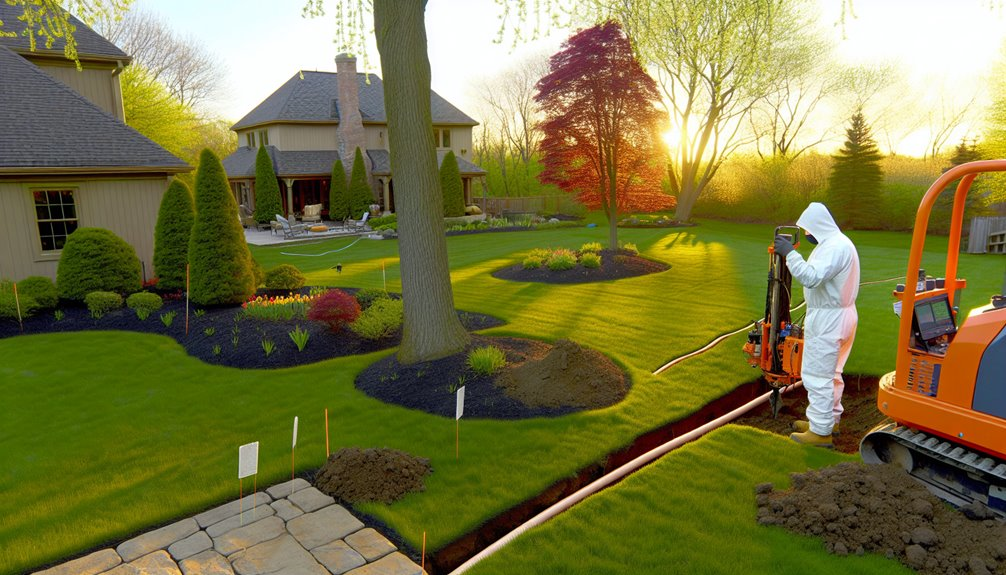
Skip the shovel and route new lines with guided boring to place irrigation laterals and low-voltage lighting conduits with minimal surface impact. With no dig methods, you steer a drill head beneath turf, patios, and beds, then pull back flexible pipe and cable.
You’ll keep grades intact, avoid muddy seams, and finish fast so your space looks cared for and cohesive.
1) Picture a clean lawn: a small entry pit, a precise bore path, and drip laterals emerging ready for quick connections.
2) Visualize path lights glowing from neatly pulled surface conduits that disappear at edges and junctions.
3) See valves, sleeves, and pull strings laid exactly to depth, labeled for future access.
4) Imagine rain sensors and controllers synced, pressure-tested, and flushed before backfill and restoration.
Avoiding Damage to Underground Utilities
How do you bore confidently without striking what’s already buried? You start by calling utility locators and verifying every mark with as built mapping. Don’t rely on paint alone—request digital files, cross-check line depths, and note discrepancies.
Before drilling, perform a walkdown, flag hazards, and set tolerance zones. Soft-dig every crossing with vacuum excavation to expose lines and confirm clearances.
Use a calibrated locator on your drill head and record depth/azimuth at each rod. Keep steering corrections small to avoid drift into marked corridors.
Maintain a clean entry/exit pit to control returns and visibility. If readings conflict, stop, re-scan, and update the plan.
Document each locate, pothole, and alignment change so your crew shares one picture. Safety isn’t solo; it’s our standard.
Cost and Time Benefits for Homeowners
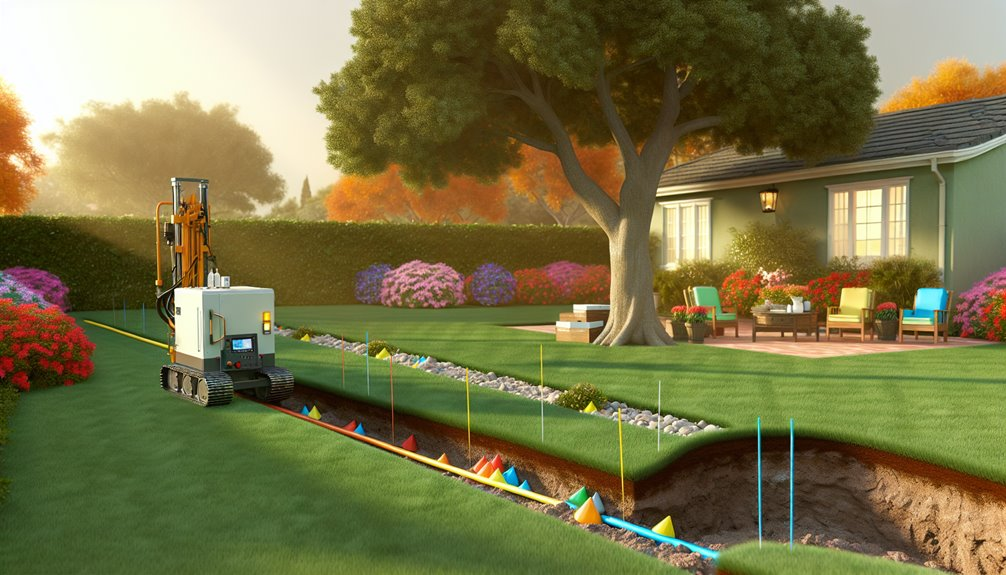
Although trenching looks cheaper on paper, directional drilling often lowers your total project cost and finishes faster. You avoid extensive restoration—no torn-up lawns, driveways, or hardscapes—so you realize lower costs and faster timelines without sacrificing safety.
HDD minimizes open excavations, reducing permits, traffic control, and crew hours. Precision guidance systems shorten installation windows and cut rework. You get predictable budgets and a site that stays usable for your family and neighbors.
1) Imagine a narrow drill head steering beneath your garden beds while the surface stays intact.
2) Picture clean entry and exit pits, not a muddy trench slicing across your yard.
3) See utilities installed in hours, not days, with fewer site disruptions.
4) Envision minimal restoration: reseed small patches, not rebuild entire sections.
When to Choose HDD Over Traditional Trenching
When site conditions demand minimal surface disturbance and precise utility placement, choose horizontal directional drilling (HDD) over trenching. Use HDD when you must protect mature trees, hardscapes, or delicate gardens; it minimizes soil compaction and reduces root severance by steering beneath critical zones. Select it for crossings under driveways, sidewalks, roadways, or waterways where open cuts increase risk, traffic disruption, and restoration costs.
Prioritize HDD in congested corridors with existing utilities; guided tooling and continuous tracking help you avoid conflicts and maintain specified depth and separation. Choose it for poor surface access, steep grades, or erosion‑sensitive slopes where trench stability is questionable. When groundwater is present, HDD limits dewatering needs and preserves surface integrity. If you need predictable alignment, tight tolerances, and safer outcomes, HDD is your best path.
Hiring Qualified Contractors and What to Expect
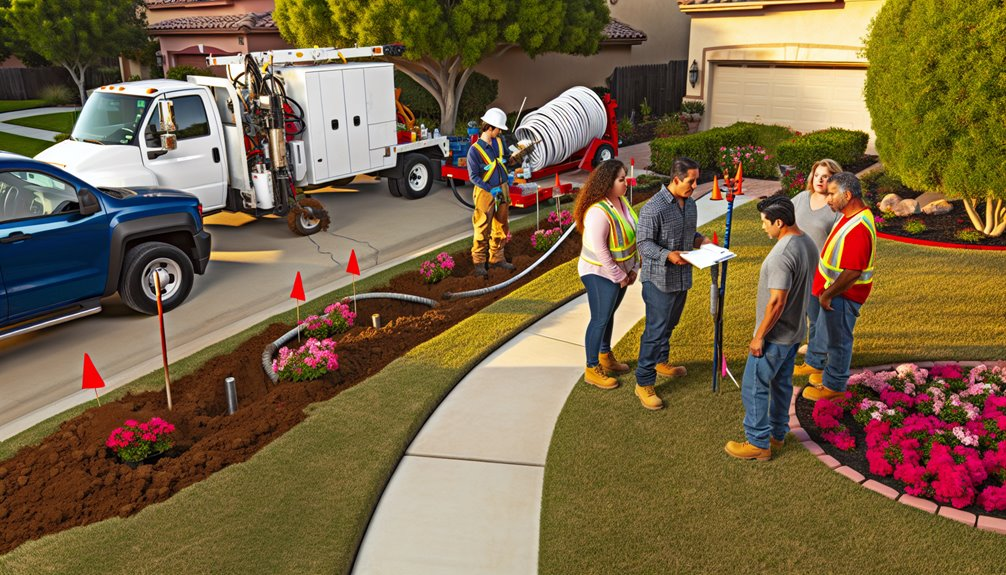
Selecting HDD over trenching is only half the decision; the contractor you hire determines whether the plan performs safely and to spec.
Start by shortlisting licensed contractors with HDD-specific experience, verifiable strike-free records, and calibrated locating equipment.
Ask for site walks, subsurface utility engineering, and a documented safety plan.
Expect clear contracts that define scope, tolerances, restoration standards, and change-order triggers.
- White-painted path, utility marks, and a scanner sweep before the pilot bore—everyone aligned on the subsurface.
- Drill head steering logs showing depth, pitch, and azimuth—precision you can audit.
- Mud program with returns managed in lined containment—no messy blowouts in your beds.
- Pullback with rollers and torque limits—conduit protected, landscaping intact.
You’re not just hiring skill; you’re joining a crew committed to your property’s protection.
Conclusion
As the owner of Boring Bros., I’ve seen firsthand how horizontal directional drilling can protect your landscape and make installations faster, cleaner, and more reliable. If roots, patios, or crowded utilities are making open cuts risky or expensive, give us a call — we’ll walk you through the best solution, handle locates and soil checks, and make sure the job meets code and your expectations. Visit boringbro.com to learn more or call (954) 639-6167 — we’d love to help you protect your property and get the job done right.

